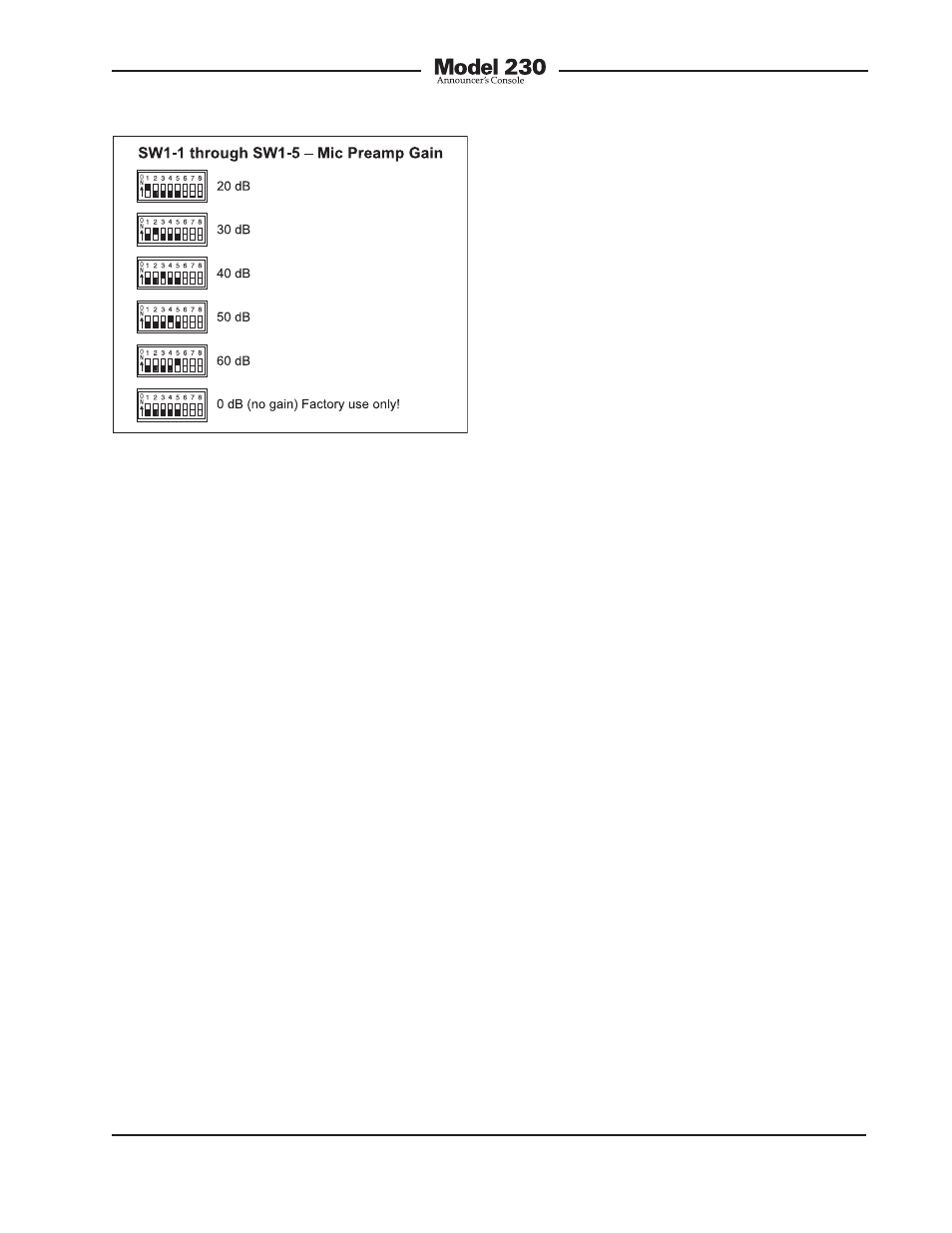Studio Technologies 230 2008 User Manual
Page 19

Model 230 User Guide
Issue 7, October 2008
Studio Technologies, Inc.
Page 19
signal up to line level, nominally –2 dBu,
on the Model 230’s main output. Operat-
ing at this signal level will help to ensure
the delivery of “clean” audio to the con-
nected device. The output of the Model
230’s microphone preamplifier is used
by both the main output and, by way of
the compressor circuit, the talkback func-
tions. So creating a nice “hot” signal will
help maintain audio quality, specifically
the signal-to-noise ratio, when driving the
often-lengthy cable runs.
Unfortunately, there’s no “perfect” gain
setting that this guide can recommend.
The two issues that impact the setting
are output sensitivity of the connected
microphone and the acoustical output
level of the microphone’s user. With
some headset microphones, such as the
Sennheiser HMD25, selecting an initial
setting of 40 dB is appropriate. Users who
speak loudly might need to have the gain
reduced to 30 dB. Quiet users might
need 50 dB of gain.
An LED indicator is provided as an aid
in correctly setting the gain of the micro-
phone preamplifier. Red in color, this LED
is located adjacent to switch assembly 1.
It is visible by observing the bottom of the
Model 230’s enclosure when the security
plate has been removed. Technically, this
red LED lights whenever the compressor
circuitry is controlling the dynamic range
of the signal coming from the microphone
preamplifier. The threshold is set to be 2
dB above the Model 230’s nominal internal
operating level. So a good “rule of thumb”
is to adjust the gain of the microphone
preamplifier so that the compressor active
LED lights (“flashes”) when the connected
microphone is sending signal peaks. Dur-
ing normal operation the LED should not
remain fully lit when audio is present on
the mic input.
It’s important to remember that the com-
pressor active LED is used to assist in set-
ting the gain to the optimal value. It doesn’t
indicate that the main output’s signal is
being compressed. With the Model 230,
unless specifically modified to perform
otherwise, the output of the compressor is
only used for the talkback output functions.
It’s expected that the 20 and 60 dB gain
settings will not often be used. But there are
always exceptions and that’s why they were
included. It’s possible that with a very “hot”
microphone, such as a phantom-powered
condenser-type, 20 dB of gain could be
correct. It’s also possible that a micro-
phone with a very low-level output, such
as a ribbon-type, would need 60 dB of gain.
But in general, the 30, 40, and 50 dB gain
settings will serve most applications.
Note that if no gain switch is set to its active
(on) position the preamplifier will operate at
unity (0 dB) gain. In this mode the preampli-
fier remains stable, but is intended for use
only during factory testing. A valid excep-
tion would be where a line-level signal is
connected to the microphone input. This
Figure 4. Microphone preamplifier gain switch
settings
